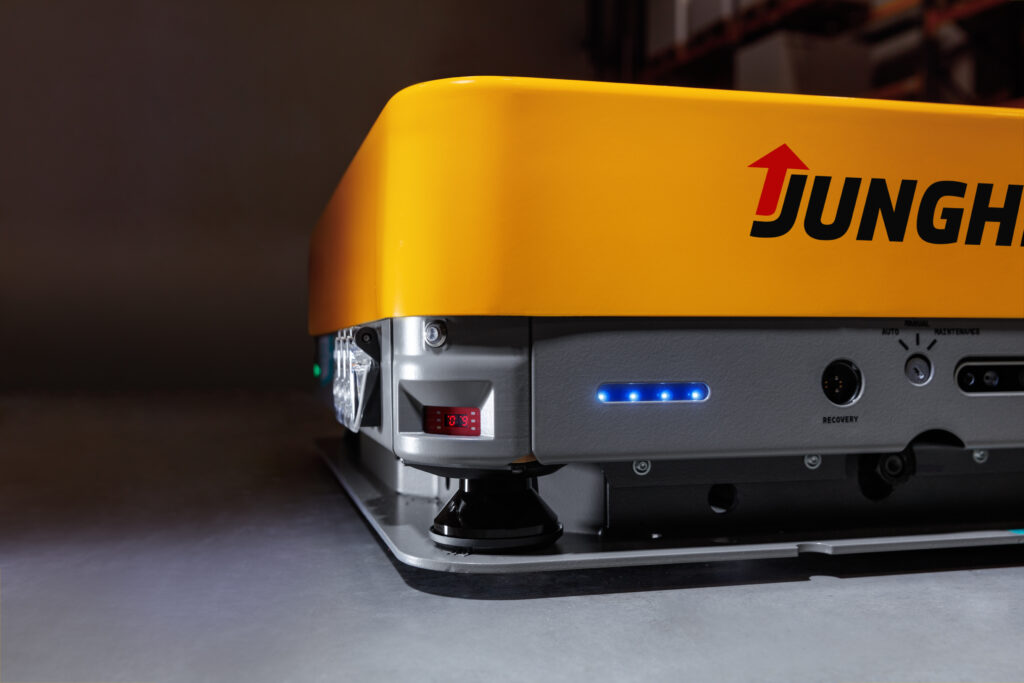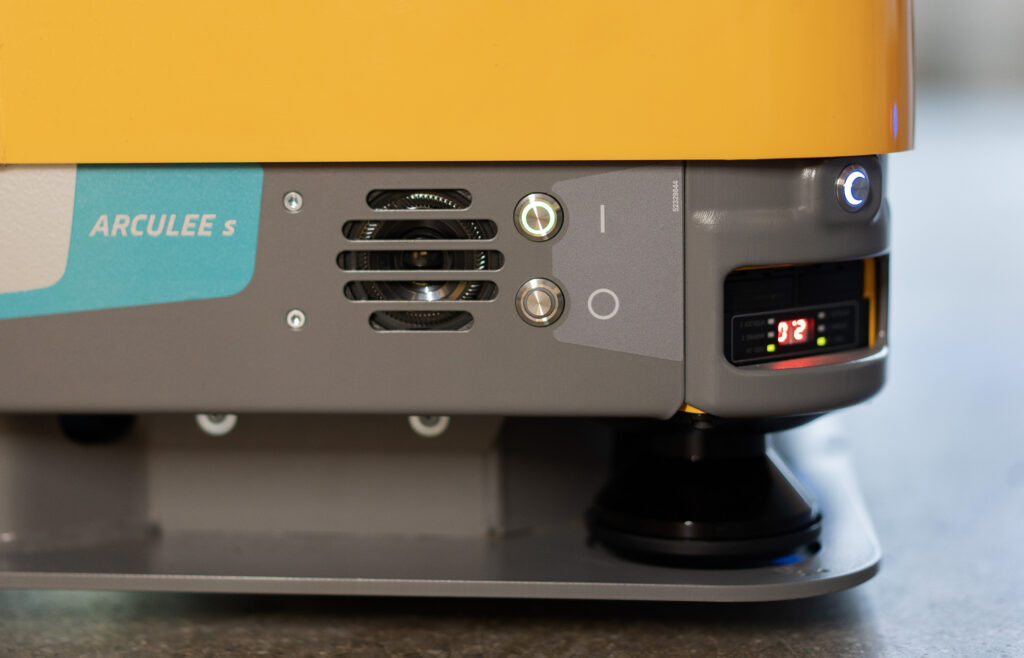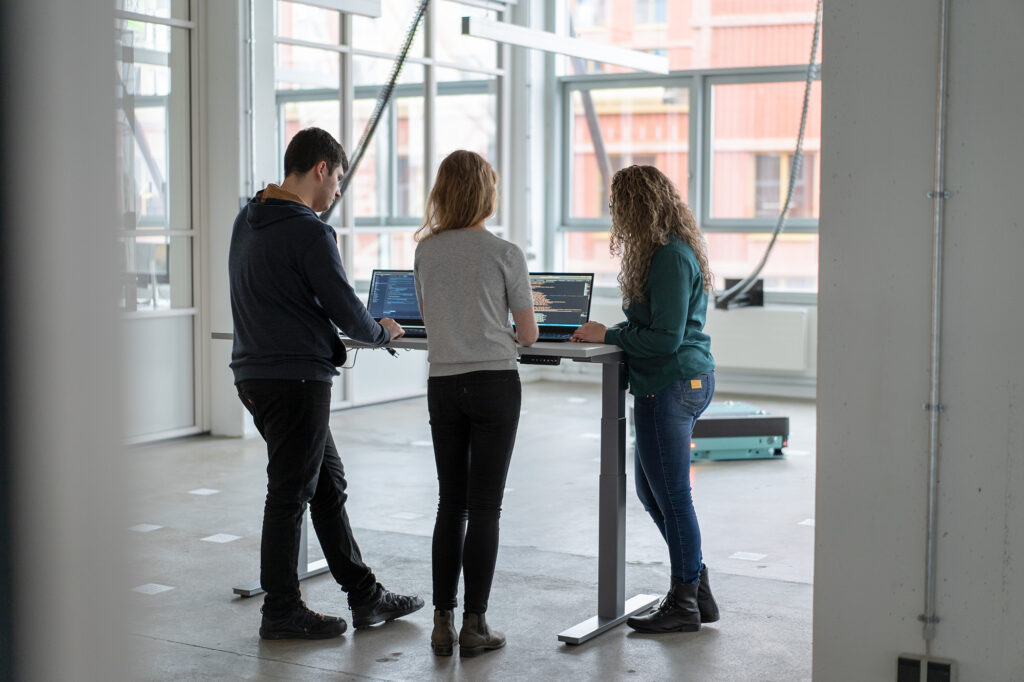Safety standards ensure that robots and humans successfully co-exist in the industrial world. Every (AMR) Autonomous Mobile Robot – including our arculee – must meet basic protocols to operate without endangering humans or causing material damage. But what are safety standards, who defines them, and how does arculus incorporate them into its product? This article will answer all these questions and provide insights into the impact of the guidelines for Intralogistics 4.0.
What are safety standards?
Safety standards are a set of guidelines to ensure compliance with robotic specifications. They establish protective measures taken by all agents involved – from the robot’s production to customer use. The unique aspect of these guidelines is that any stakeholder (consumers, manufacturers, businesses, research institutes, and public authorities) can propose a standard. It is then reviewed and developed by regional and international experts with full consensus to reach a common standpoint.
“Simply put, safety standards are primarily concerned with protecting workers from hazardous accidents, and regulating the robot’s operation.”
Martin Schöpp, our Functional Safety and Automation Engineer, who analyses these protocols and derives requirements for arculus.
A recognised European Standards Organization – CEN, CENELEC or ETSI – sets the rules for all products, services and processes in Europe. These standards are regularly updated to keep pace with advancements in the field. Guidelines for electrical safety of Autonomous Mobile Robots, for example, usually take about five years. On the other hand, general standards that apply to all machines in the EU are reviewed less frequently, usually every 15 to 20 years. This continuous review and updating of processes ensures that technology within the EU is safe, reliable and up-to-date.
Safety features of the arculee
When it comes to the arculee, arculus has integrated various features to prevent on-site injury to warehouse workers or damage to goods and premises. One of its core safety components is the capability to detect humans in close proximity, allowing the robot to behave accordingly. As Martin describes it:
“From the human safety perspective, the main capacity of the arculee is to detect a person around it using LiDAR sensors, also commonly known as safety scanners. It notes the travel speed and direction and uses that to estimate the braking/stopping distance. Based on these three factors, it evaluates if the person is inside the hazardous zone or not.”

Another crucial feature is the robot’s ability to identify six types of load using inductive sensors. Each load, including tables and pallets, has a different size and can be transported crosswise or lengthwise (depending on the type) on the arculee. “If a robot does not accurately identify the load type and carries a bigger load than initially estimated, it has a higher probability of crashing into a wall or a human. This is a safety function that truly saves the day.”, Martin explains.
In addition to load carrier recognition, the arculee can also detect the placement of pallets via sensors in the Backpack — a piece of equipment mounted on our robot to drive pallets. These sensors are critical to placing the pallets correctly and safely transporting them to their destination. In Martin’s words:
“For pallets, we extend the braking distance, and the arculee drives slower. A pallet must be placed on top of the Backpack in the centre to prevent the robot from tipping. Bad positioning can make the arculee lose its balance and potentially damage the load it is transporting. This feature enables our robot to detect if the pallets are in the right position and not drive further to prevent any accidents.”
Lastly, our AMR has a safe recovery function for lifting and driving. “When the arculee encounters an obstacle within its safety fields, it signals that it cannot drive further. In such cases, the worker(s) can switch to recovery mode and manually move it out of the deadlock.”, explains Martin. In case of system failure or hardware issues, the workers can use a recovery trolley to move the arculee. “The user first needs to switch off the robot to stop it from operating automatically, place the trolley beneath it, and connect the cable to the arculee. The brakes then open, allowing the user to pull the robot to the service area without creating havoc in the warehouse.”, he continues.

From Regulations to CE Mark and beyond
The primary purpose of complying with safety standards is ensuring that our AMR meets all requirements to safely drive in the warehouse alongside humans. While arculus has successfully attained various certifications, one of the most significant milestones the company has recently achieved is getting the statement of conformity for the latest version of arculee by the notified body TÜV SÜD Product Service GmbH. This assures that the robot has been developed and tested for safety and complies with national and European safety standards.
“All industrial robots have to provide elementary safety functionality, and the manufacturer can declare conformity and put the CE Mark on the robot. However, not all of them are inspected and tested by a notified body, which ensures that there are no critical bugs implemented. The statement of conformity by the notified body, TÜV Süd Product Service GmbH for the newest arculee generation is a big achievement for arculus and its team.”
Romano Wolf (Product Lead – Robotics)
For the accreditation mentioned above, the arculee has to comply with at least four DIN Standards (German Institute for Standardisation), namely DIN EN 1175:2020-10, DIN EN ISO 3691-4:2020-11, DIN EN 12100:1997-11, and DIN EN ISO 13849-1:2016-06.
How does arculus comply with safety standards?
The safety standards are fundamental to building the arculee. For that, it is equally important to test the robot to ensure full compliance. As Martin puts it:
“Quite often, the instructions for testing are provided by the standard itself. For example when testing personnel detection, the standard states which obstacles need to be detected, what we need to place on the floor and where. The guidelines also specify that we should test at full speed and with a 110% overload situation. And if everything runs as expected, the robot immediately stops before hitting the obstacle.”
However, when no directions are given, the team is responsible for defining what tests they need to run for safety verification. “Some can be verified by doing calculations like the mechanical strength of the robot. But processes that have to do with the functioning of the arculee, or what determines its behaviour, need to be tested”, adds Martin.

Some of these tests include:
- Hardware integration tests
- Type tests for European Conformity (CE)
- In-Line and End-of-line tests during production
- Release tests for potential software updates
Training for a safe and sound co-workspace
To ensure that employees are familiar with the latest safety standards, arculus incorporates them into the company’s system. This makes them easily accessible to all teams at all times. Additionally, the company conducts regular training sessions led by industry experts to provide employees with in-depth information on the latest guidelines. With that, arculus employees are up-to-date with the latest safety regulations and can apply them effectively in their work.